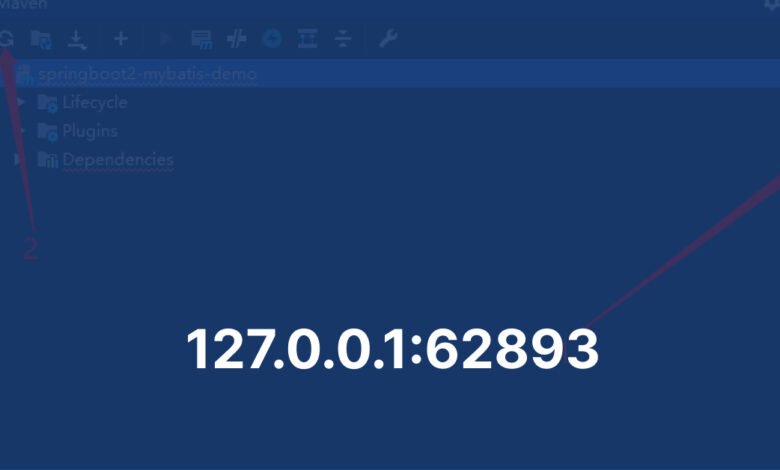127.0.0.1:62893 Explained: A Deep Dive into Localhost and Port Numbers
In the technical world of networking and software development, the address “127.0.0.1:62893” is more than just a string of numbers—it represents a crucial aspect of how computers communicate with themselves and with other applications. This article delves into what “127.0.0.1:62893” means, exploring the role of the localhost IP address and port numbers, and their significance in various computing scenarios.
Breaking Down 127.0.0.1:62893
To understand “127.0.0.1:62893,” it’s essential to break it down into two key components: the IP address and the port number. Each component serves a specific purpose in network communication and application development.
1. IP Address – 127.0.0.1
- Definition and Purpose: The IP address “127.0.0.1” is known as the loopback address or localhost address. It is a reserved IP address used to refer to the local machine. This address allows a computer to communicate with itself for various purposes, including testing and network diagnostics. The range for loopback addresses is from 127.0.0.0 to 127.255.255.255, but “127.0.0.1” is the most commonly used.
- Applications in Computing:
- Testing and Development: Developers use the loopback address to test applications on their local machines without needing a live network. For instance, when building a web application, a developer might run a local server on their machine and access it through “127.0.0.1” to verify functionality before deploying it online.
- Network Diagnostics: The loopback address is useful for diagnosing network issues. For example, if a network application fails to connect via “127.0.0.1,” it indicates a problem with the application itself rather than external network issues.
2. Port Number – 62893
- Definition and Function: The port number “62893” is part of the dynamic port range (49152-65535), which is used for ephemeral or temporary connections. Ports are numerical identifiers that help direct network traffic to specific services or applications running on a machine. Each port can be thought of as a separate channel through which data can flow.
- Applications in Software:
- Local Applications: When running applications like web servers or databases locally, a dynamic port number such as “62893” is used to handle connections. For example, a local development server might use this port to listen for incoming requests and serve content accordingly.
- Network Services: Port numbers allow multiple services to run simultaneously on the same IP address. By using different ports, a machine can manage several services (e.g., a web server on port 80 and a database on port 5432) without conflict.
Common Scenarios for Using 127.0.0.1:62893
- Local Web Development: When developers build and test web applications, they often run local servers on their machines. The server might be set to listen on port “62893,” and developers access the application by navigating to “127.0.0.1:62893” in a web browser. This setup allows developers to test functionalities and make changes without affecting a live site.
- Database Connections: Many databases use dynamic ports for client connections. For instance, a database server running locally might use port “62893” to handle queries from a database client. This allows developers and administrators to interact with the database during development and testing.
- Network Services Testing: IT professionals and network engineers use the loopback address and dynamic ports to test network services and configurations. By setting up services to communicate over “127.0.0.1:62893,” they can ensure proper setup and functionality before deploying these services to a broader network.
Security Considerations
While “127.0.0.1:62893” is primarily used for local purposes, there are important security considerations to keep in mind:
- Access Control: Even though the loopback address restricts access to the local machine, vulnerabilities in software can still pose security risks. It’s crucial to ensure that services running on dynamic ports are properly secured and do not expose sensitive data.
- Port Management: Proper management of dynamic ports is essential to avoid conflicts and ensure that services are correctly assigned. Misconfigured ports can lead to issues with service accessibility and network performance.
- Monitoring and Logging: Implementing monitoring and logging for network traffic on dynamic ports can help identify and address potential security issues. Regularly reviewing logs and traffic patterns can help in detecting unusual activity or unauthorized access.
Best Practices for Using 127.0.0.1:62893
- Proper Configuration: Ensure that services configured to use dynamic ports like “62893” are correctly set up to handle expected traffic and avoid conflicts with other services.
- Testing and Validation: Regularly test applications and services running on the loopback address to ensure they are functioning as intended. This includes checking for proper handling of requests and ensuring that no security vulnerabilities are present.
- Documentation: Maintain documentation for configurations involving dynamic ports and localhost addresses. This helps in troubleshooting and managing network services effectively.
Conclusion
The address “127.0.0.1:62893” embodies a critical aspect of local computing and network communications. Understanding the loopback address and port numbers is essential for developers, IT professionals, and network engineers. By leveraging these components, individuals can efficiently test, develop, and manage applications and services on their local machines. Proper management, security practices, and adherence to best practices ensure that these tools are used effectively, contributing to a robust and reliable computing environment.














Post Comment